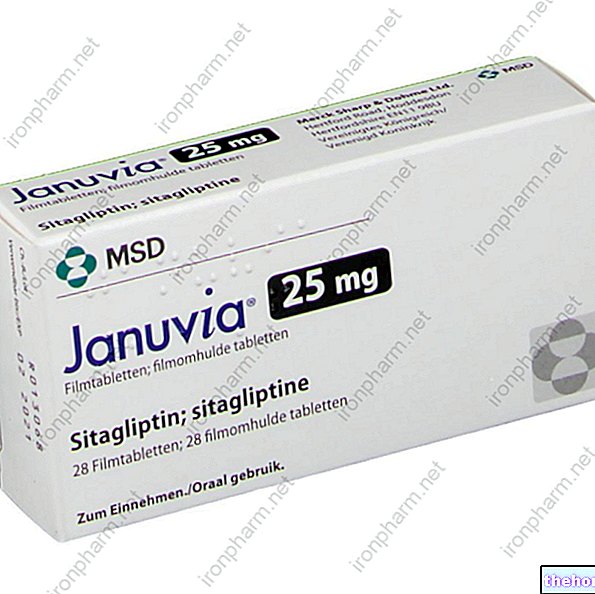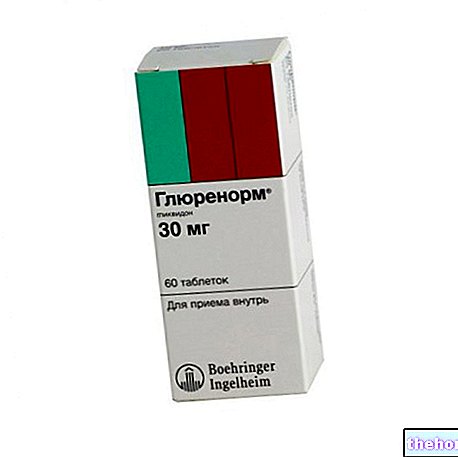
What is Glubrava?
Glubrava is a medicine available as white, oblong tablets containing two active substances, pioglitazone (15 mg) and metformin hydrochloride (850 mg).
The medicine is similar to Competact, which is already authorized in the European Union (EU). The company that makes Competact has agreed that its scientific data will be used for Glubrava.
What is Glubrava used for?
Glubrava is used in patients (especially those who are overweight) with non-insulin-dependent diabetes (type 2 diabetes). Glubrava is used in patients who are not sufficiently controlled with metformin alone (an antidiabetic medicine) at maximum doses.
The medicine can only be obtained with a prescription.
How is Glubrava used?
The normal dose of Glubrava consists of one tablet taken twice a day. Patients switching from metformin alone to Glubrava may need to introduce pioglitazone slowly until a dose of 30 mg per day is reached. When needed, it is possible to switch directly from metformin to Glubrava. Taking Glubrava with or shortly after meals may reduce stomach problems caused by metformin. In older patients, kidney function should be monitored regularly.
How does Glubrava work?
Type 2 diabetes is a disease in which the pancreas does not produce enough insulin to control the level of glucose in the blood. Glubrava contains two active ingredients that each have a different action. Pioglitazone makes cells (fat, muscle and liver) more sensitive to insulin, which allows the body to make better use of the insulin it produces. Metformin basically inhibits the production of glucose and reduces its absorption in the intestine. The result of the combined action of the two active ingredients is a reduction in the glucose present in the blood, which helps to control type 2 diabetes.
How has Glubrava been studied?
Pioglitazone alone has been approved by the EU under the name Actos and can be used together with metformin in the treatment of type 2 diabetes in patients in whom metformin alone does not provide sufficient control. Three studies conducted on Actos used in combination with metformin as separate tablets have been used to support the use of Glubrava for the same indication. These studies lasted from 4 months to two years and 1 305 patients took the combined dose. These studies measured the concentration in the blood of a substance (HbA1c) which gives an "indication of the effectiveness of blood glucose control."
What benefit has Glubrava shown during the studies?
In all studies, adding 30 mg of pioglitazone to metformin resulted in improved blood glucose control, with HbA1c levels further decreasing by 0.64 - 0.89% compared to levels obtained with alone. metformin.
What is the risk associated with Glubrava?
The most common side effects of Glubrava (seen in between 1 and 10 patients in 100) are anemia (low red blood cell count), visual disturbances, weight gain, arthralgia (joint pain), headache, hematuria (blood in the urine ) and erectile dysfunction (difficulty with erection). For the full list of side effects reported with Glubrava, see the Package Leaflet.
Glubrava should not be used in patients who are allergic to pioglitazone, metformin or the other ingredients of the medicine, as well as in patients with heart failure or liver or kidney problems. Glubrava must not be used in patients with a disease that causes a lack of oxygen in the tissues such as a recent heart attack or shock. Glubrava should not be used in alcohol intoxication, diabetic ketoacidosis (high levels of ketones), conditions that can affect the kidneys and during breastfeeding. For the full list of restrictions, see the package leaflet.
Why has Glubrava been approved?
The Committee for Medicinal Products for Human Use (CHMP) concluded that the efficacy of pioglitazone and metformin in type 2 diabetes has been demonstrated and that Glubrava simplifies treatment and improves compliance when a combination of the active substances is required. .
The CHMP decided that Glubrava's benefits are greater than its risks for the treatment of type 2 diabetes and has agreed to grant the marketing authorization for Glubrava.
More information about Glubrava
On 11 December 2007, the European Commission granted Takeda Global Research and Development Center (Europe) Ltd a "Marketing Authorization" for Glubrava, valid throughout the European Union.
For the full version of Glubrava's EPAR click here.
Last update of this summary: 03-2008.
The information on Glubrava published on this page may be out of date or incomplete. For a correct use of this information, see the Disclaimer and useful information page.




























